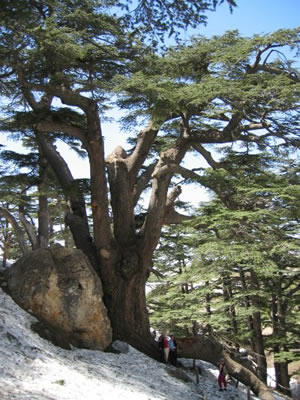Cedarwood Cedrus atlantica

blue atlas cedar
- Common Names
- Cedarwood, Atlas , Atlas cedar
- Botanical Name
- Cedrus atlantica
- Family
- PINACEAE
Medicinal Uses & Benefits of Cedarwood, Atlas
![]() How to Use|
Side Effects |
Plant & Garden|
Aromatherapy Oil |
Folklore
How to Use|
Side Effects |
Plant & Garden|
Aromatherapy Oil |
Folklore
- Medicinal Uses: * Acne
* Bronchitis
* Cellulite
* Insect Repellent
- Properties: * Anxiety * Aromatic * Astringent * Calm * Diuretic * Expectorant * Insect repellents * Muscle Relaxant * Sedative
- Parts Used: Essence obtained from wood
- Constituents: terpenic hydrocarbons, cedrol, sequiterpenes
How to Use: Cedarwood
There are two commercial oils which are known as cedarwood today, Cedrus atlantica, Atlas cedarwood, which is a true cedarwood, and Juniperus virginiana, known as red cedar. Cedarwood is known for use in problem skin, as an insect repellent, and as an inhalent in respiratory complaints. It's actions are sedative, astringent, and antiseptic. It can be used to treat oily skin and scalp, relieve itching, and more serious skin conditions like psoriasis and eczema, remembering that high concentrations will irritate the skin. Cedarwood is similar in action to the highly expensive sandalwood, it also has a sedative effect making it grounding in conditions of anxiety and nervous tension. 1
Preparation Methods & Dosage :Use the essential oil in skin care and aromatherapy diffusers.
Cedarwood Remedies
Cedarwood : Essential Oil Profile
Cedarwood oil is extracted from the red cedar, a coniferous tree native to North America, commonly used to make pencils.
Cedarwood Side Effects: A skin irritant in high concentrations.
Plant Description
- Conifer
- Etymology: From the Greek Kedros a resinous tree
- Bark/Seeds:Bark is dark grey, fissured, thick branches. Flowers in summer followed by brown, resinous cones. Medium-sized to large tree, 30 35 m (rarely 40m) tall, with a trunk diameter of 1.5 2 m
- Parts used: Essential oil distilled from needles
- Leaves:Crown is dense, forming a wide umbrella shape. Dark green needles in tuffs,
- Distribution: Native to the Atlas mountains of Algeria and Morocco.
Regional Traditions :Middle East * North America *
- Red Cedarwood Juniperus virginiana The familiar scent associated with pencils
- Lebanon cedar Cedrus libani As a result of long exploitation, very few old trees remain in Lebanon,
- Texas Cedarwood Juniperus mexicana : Texas cedarwood oil is steamed out of the dead cedarwood found on the local ranches from previous clearing operations for livestock grazing. Cedar oil makes a good insect repellent- Texas cattle fences are built with cedar posts which resist decay and pest infestation for 50 years or more. from The warm,smoky essence evokes memories of the smell of the fresh mountain air in the Texas hill country is a pleasant note to use in aromatherapy.
History and Traditions & Folklore
Cedrus libani, cedar of Lebanon was used by the ancients to build temples and palaces in the Middle East, cedarwood oil was possibly the first oil to be extracted from a plant, and was used by the Egyptians in the mummification process. The tree is now very rare. 2King Solomon's temple was said to built entirely from cedar from Lebanon. Only a few hundred trees survive of the once vast forests of the Lebanon cedar Cedrus libani. The twelve oldest and largest of these trees are revered by every monotheistic religion, and it is believed that an evil fate will overtake anyone who harmes on of these trees. 3
- Tisserand, Robert B. "The Art of Aromatherapy", (1977)
- The Gymnosperm Database
- Ernst and Johanna Lehner. "Folklore and Symbolism of Flowers, Plants and Trees" (2003)












